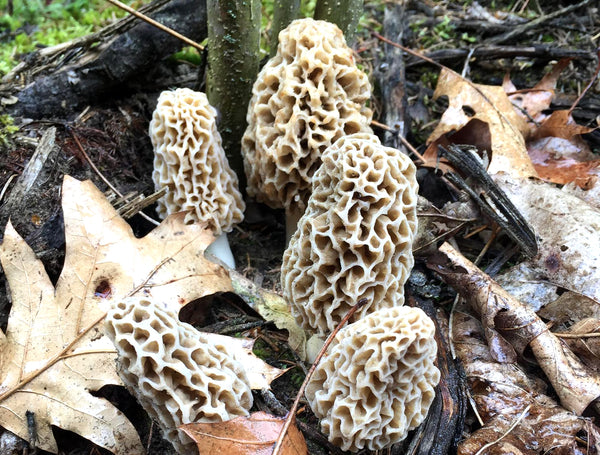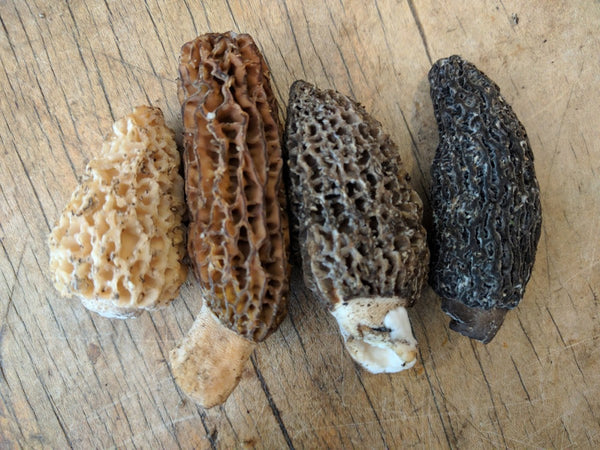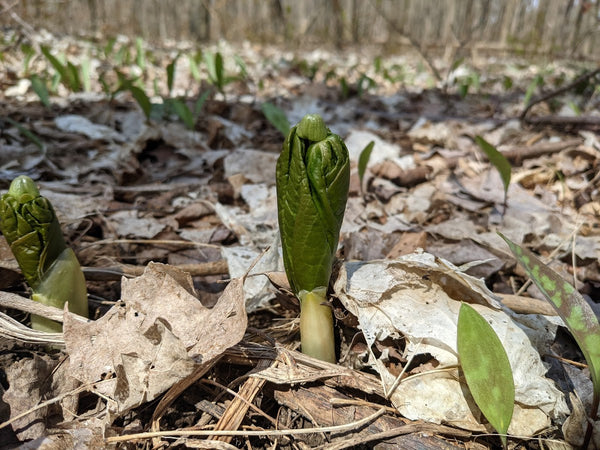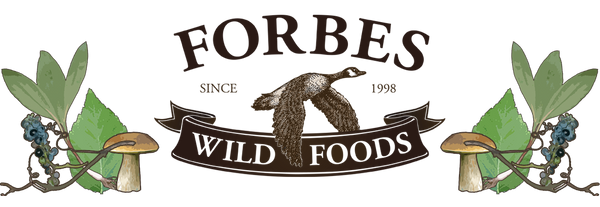How to find Morels
•Posted on 4月 29 2021


Yellow Morel
Hunting for the the elusive morel.
"I've been searching for years. How do I find morels?" This is a common question asked in foraging groups and by people excited about one of spring's greatest treasures. These elusive mushrooms seem to grow everywhere and anywhere, yet never where you are looking.

Young morels photo courtesy of Jordan Madley
Morels are a diverse and widespread spring mushroom. They grow the world over, and include dozens of varieties that each require a specific set of conditions to thrive. For this reason there can be some contradictory information on how to locate them. For the most part, morels have a mycorrhizal relationship with nearby trees and plants. Mycorrhizal relationships are symbiotic, meaning both the trees and mushrooms thrive as a result of this connection. That said, there are a few varieties of morels that are saprobic, meaning that they can grow from soil with no direct association with trees.

Dried Morels
The dried morels Forbes stocks come from the Canadian far North, in BC, Yukon and the Northwest territories, where they flourish following forest fires and can carpet the ground with abundant growth. However these morels are different from the ones you will find near parks, orchards, or even in your backyard in more temperate climates. There are actually dozens of distinct types of true morels. Many are visually identical, but their genetics differ from similar-looking ones found elsewhere.

Morel photo courtesy of Aaron Elyk @aaron_the_forager

Photo courtesy of Jordan Madley
Where to look
Across Canada and into the USA, we find over 40 different types of morel: black ones, yellow ones, grey ones, green ones, conical ones, and more. Each type tends to favor a different habitat, with yellow morels often found near deciduous trees such as poplar, elm or aspen, and black morels often found in apple orchards and on hills covered in maple near where we pick. It's important to know your trees to find your mushrooms! Learn to identify trees in winter time, as they may not be budding or full of leaves while you are hunting for mushrooms in spring. To increase your odds of finding morels, learn to identify elms, ash, poplars (trembling aspen and cottonwood), apple and stone fruit trees such as peach or plum. Maple trees in clearnings or around the edges of sugar bushes as well as old orchards are often home to lots of morels. So, you don't need to seek out locations where forest fires have recently cleared land; there are many potential places near you where morels will appear. Many people see a connection between forest fires and morels, however the connection is not with the fire but with the death of trees. When a morel host tree dies or becomes stressed this can trigger a larger than normal flush of morels so keep your eyes peeled on the ground near hardwood trees that have reach their end.

Different morel varieties
Some of my favorite places to look are around the exterior of small woodlots that pop-up in fields, and in meadows that have been left to go wild. Morels like to have a little light, so deep in the dark recesses of the forest will not be as fruitful as in clearings or the edges of the forest. Orchards can be a great place for morels but its best to stick to places that have not been sprayed.

Mayapple is a great sign morels will be here soon.
When to look
In Ontario and in many other places throughout central and eastern North America, the first morels of the season are black varieties, followed soon by yellow ones, which often arrive at the same time as cherry blossoms and the unfurling of mayapple leaves. In springtime, when soil temperatures are above 10°c ( 50°f ) consistently for about 5 days, you should start to see them peeking out of the forest floor. In southern Ontario, they can sometimes start showing up in April but tend to be in full swing in May with places further south happening sooner, and places further north often a little later. Altitude can also have a big effect on when they start to show up with the top of the Niagara Escarpment often being two weeks behind places only a 1/2 hour drive away. Within about two to three weeks, if the weather remains moderately cool and wet, the morels will grow to full size depending on available moisture and resources.

Gyromitra brunnea - edible but not to be confused with gyromitra esculenta that is very toxic!

Verpa bohemica on the left, Morel on the right. Both are edible.
The start of morel season will also bring Verpa bohemica, a morel cousin from the Morchellaceae family. Verpa is edible, but suffers from being given the incorrect name "false morel", a term that's also used for several other species of mushroom including Helvella and Gyromitra. Novice pickers should avoid all types of Gyromitra, because although many are edible, some are unpalatable, and at least one variety is highly toxic. If you can tell the difference between cabbage and iceberg lettuce, you can easily differentiate the morel look alikes, provided you consult a good visual guidebook.

Sauteed Morels photo courtesy of Seth Goering
How to prepare
Morels MUST be cooked! A raw morel is a toxic mushroom that can cause significant cramping and intestinal discomfort. It is essential that morels be well-cooked prior to consuming. For example, it is not sufficient to put raw morels on a pizza that will only be in the oven long enough to melt its cheese. Sautee your morels before eating or adding to other foods to ensure that they have come to temperature inside. The need to cook morels also extends to Verpa varieties.
One of our favorite ways of cooking morels is to actually over cook them just a touch. Simply cut into thirds and press flat then put them in a hot pan for about 5 minutes or till they start to become crispy, add a pinch of salt and enjoy your crispy morel bacon.

The real trick to finding morels is to just spend time in nature, exploring while keeping your eyes peeled to the ground. Choose an overcast day, so the sun peeking through the forest canopy is less distracting and take a paper bag or basket and knife with you should you find some of these spring delights.




Comments
4 Comments
-

Posted by Jeanne | September 24, 2024
-

Posted by Nick | September 24, 2024
-

Posted by Ryan | September 24, 2024
-

Posted by Kate | May 05, 2021
Leave a CommentI do have a small crop of morels but I dry them and will use them later
Thank you for the information! I found a false morel about a week ago, so now I want to find some true morels. Ive never tried them before, but I love mushrooms so I cant see me not liking these cool looking fungi.
Hey – this is a great article. I wish more articles were written about Morels in Ontario. I found about a dozen today myself and it took a few weeks of searching to finally find them. It’s a great pastime that gets you into nature but it really is a lifelong learning trying to get to know morels, trees, the seasons and the land such that you can find them more skillfully. All of that said, articles like this one do help us novices out. Many thanks!
Wonderful post, thank you! Though we have all manner of fungi in the mixed forest where we live, I have yet to find any morels. I will focus my eyes on the edges and sunnier sections, where my odds may be higher. Cheers!